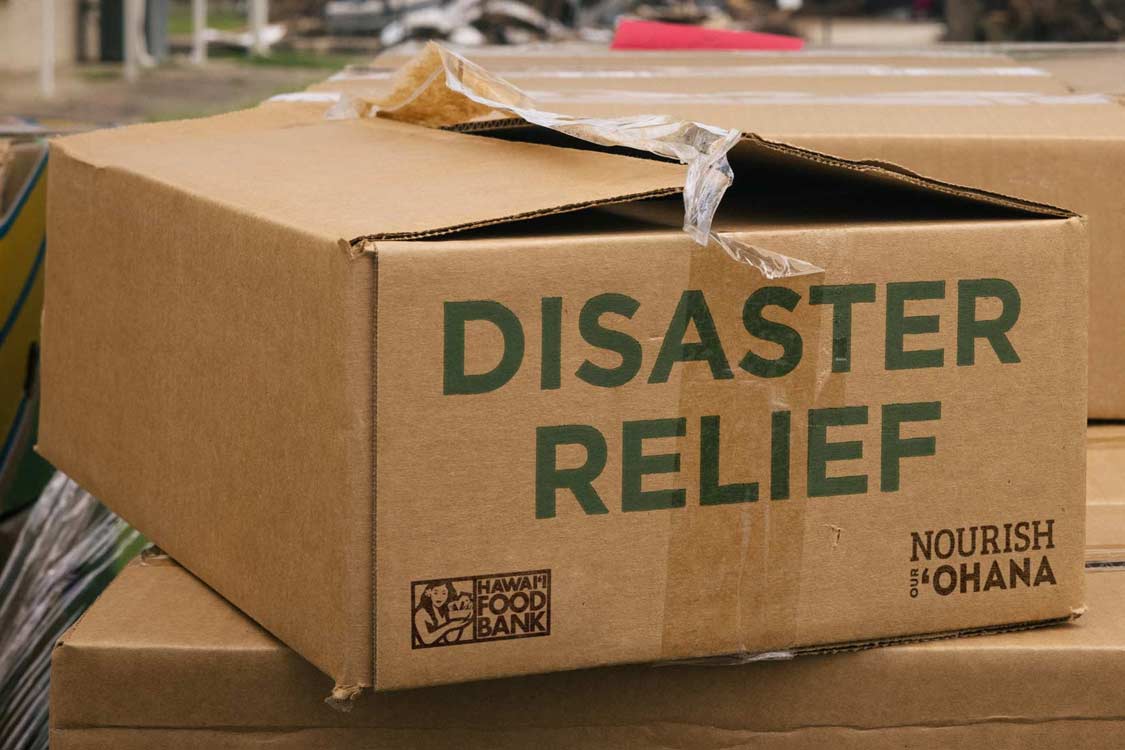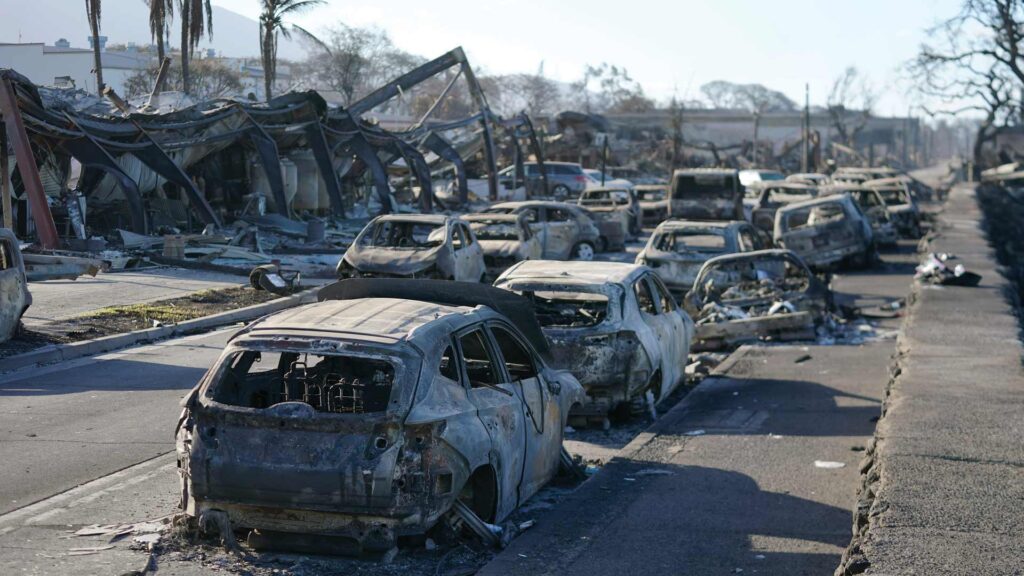Our Work
Disaster Response
When disasters unfold, many hard-working families are forced to face hunger for the first time in their lives.
At Hawai‘i Foodbank, we see our ability to support our ‘ohana in times of crisis as a vital part of our broader mission to nourish our ‘ohana today while we work to end hunger tomorrow.
Our Commitment
Hawai‘i Foodbank is a go-to agency for food response and relief when a crisis hits our islands. Recent disasters, including the COVID-19 pandemic, highlighted the vulnerability of food security in our isolated islands.
Such disasters have also lifted the power of our community to respond, surfacing new possibilities for the Foodbank to deepen its impact by leveraging our networks and relationships in support of a more coordinated and effective response to feeding needs. This is why one of our four pillars named in our 2023-2027 Strategic Plan is to be a proactive leader and supportive partner in disaster preparedness and response, formalizing our historical work in this area.

With the support of generous grants from the Hawai‘i Community Foundation and the Stupski Foundation, we have been able to kick start our Disaster Planning and Response Program in 2023. This program seeks to strengthen Hawai‘i Foodbank’s internal disaster readiness, build new partnerships with key stakeholders, and leverage our networks and position in the community to improve our collective ability to be the help we need during a disaster.
Previous Disaster Response Efforts
Hawai‘i Foodbank has longstanding experience responding to disasters across the state including Hurricane ‘Iniki in 1992, the Kīlauea eruption in 2018, the COVID-19 pandemic beginning in 2019 and the Maui wildfires in 2023.
‘Iniki Remembered
COVID-19: One Year Later
Our Role in Disaster Response
As a certified partner of Feeding America, Hawai‘i Foodbank is responsible for providing nutritional assistance services across the State of Hawai‘i. We accomplish this by directly serving O‘ahu and Kaua‘i and by working with Maui Food Bank and the Food Basket on Hawai‘i Island. Together, our network of food banks makes up the Food Bank Hui, and — just as we have the day-to-day responsibility to ensure nutritional assistance services reach families across Hawai‘i — we also have the responsibility to be there to support in times of disaster.
On O‘ahu, Hawai‘i Foodbank is the City and County of Honolulu’s lead agency for emergency feeding. In this role, our team works closely with the Honolulu Department of Emergency Management to promote disaster preparedness and work with key stakeholders across public, private and non-profit sectors to support disaster planning efforts.
On Kauaʻi, Hawai‘i Foodbank Kaua‘i is the County of Kaua‘i’s lead agency for emergency feeding. Our Kauaʻi team works closely with the Kaua‘i Emergency Management Agency as well as the Kaua‘i Community Organizations Active in Disaster (COAD), which engages a number of dedicated organizations in preparing for and responding to disasters.
Our partners at Maui Food Bank and the Food Basket take the lead on serving their island communities – before, during and after disaster – but can count on our team’s support for additional capacity or resources whenever they feel the scale of demand calls for it.
"We are better prepared than we were before, and we need to continue to get better. We do that by moving forward together. No matter what your piece is in the community, there is something you can do to support our collective resilience."
– Amy Miller, Hawai‘i Foodbank President and CEO
Disaster Response Collaboration and Partnerships
The COVID-19 pandemic showed the Hawai‘i Foodbank team how valuable our partnerships were for responding to the elevated needs of the community. Since then, we have put new energy and focus behind our efforts to build new partnerships and promote cross-sector collaboration – improving our collective ability to be the help we need during a disaster.
We proudly partner with the Hawai‘i Chapter of American Red Cross, Hawai‘i Volunteer Organizations Active in Disaster (VOAD), the National Weather Service / National Oceanic and Atmospheric Administration, alongside City & County of Honolulu DEM in our disaster preparedness and response efforts.



